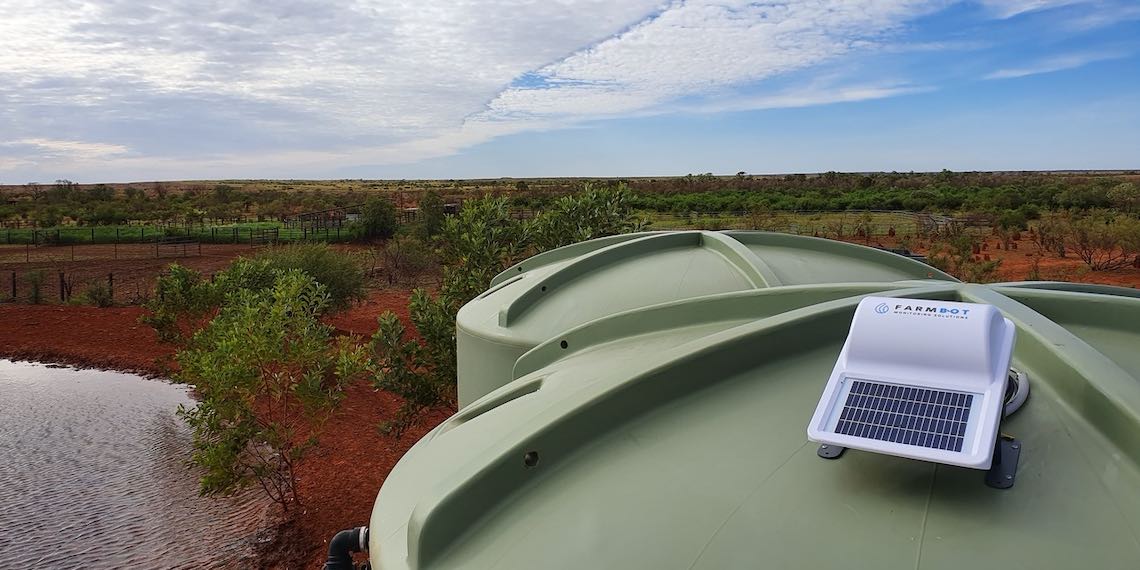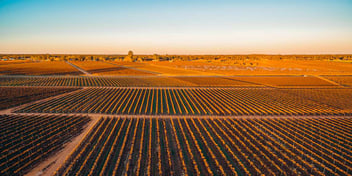Agritech aids monitoring and management of agricultural water

Water used for agriculture accounts for around 70% of all freshwater withdrawals globally. One agritech company has set out to ensure every drop applied for farming is used efficiently and effectively.
Australian agritech company Farmbot is helping farmers better manage water resources by leveraging technologies to provide targeted insights that support decision-making.
Since its launch nearly seven years ago, Farmbot's co-founders Andrew Coppin and Craig Hendricks have been dedicated to monitoring water in remote and rural Australia.
“Our main focus is around how to use water more wisely in agriculture. There's a massive amount of water wastage in agriculture due to over-watering and poor management,” Coppin said.
“I've never met a farmer whose first thought of the day isn't about weather and water. Weather is really the proxy to forecast access to water and make a judgement on supplies. Right now, there would be at least 10,000 farmers driving around Australia, doing nothing other than checking water, because it's so instrumental to what they do.
“We’re using remote telemetry, sensors and always-on connectivity to help solve this problem for farmers. We're currently monitoring water at about 5500 locations around the country in real-time so that farmers can be more aware of their water resources.”
Farmers more aware of managing water resources
Coppin said the agritech sector is growing fast, a result of the pressure climatic changes are having on the water cycle and the need for a more targeted approach to agricultural water management.
“Climate change means that we are living in a very volatile environment, where water can come and go faster than ever before. A new terminology emerged about six months ago, which is ‘flash droughts’,” he said.
“We all know what a flash flood is, but now we've also got a specific term for very fast and destructive droughts. We're seeing water systems change and evolve with harsher climate conditions. All of this pertains to needing to know more about water in real time.
“We need to be doing more with our water, and we can enhance our productivity and our profitability by better utilising it.”
Agritech water monitoring
Coppin said Farmbot’s aim is to help get Australia to a point where all water use is managed with defined accuracy.
“You can't manage what you don't measure. We want to know exactly how much water we've got and we can start using data to better inform management decisions,” he said.
“When we start overlaying data on water with rainfall outlooks, and other water-level information like trends and flows, we can start making substantially more accurate predictions about what types of farming is achievable and how. Good decisions start with valid data.
“And our technology is allowing farmers to do that in real-time, anywhere in the country. We use satellite technology when we don't have 4G or NB-IoT. We are part of the Internet of Things. So, the connected devices on a farm, along with Farmbot itself, create a technology hub that can talk to up to 20 different devices.
“In the paddock, we are using things like LoRa point-to-point and different communications protocols, depending upon what is required at the time. It's all about combining data sets from different inputs. It could be soil moisture, water levels from a tank or dam, rainfall, water pressure, flow — we utilise all sorts of different data sets.
“But, ultimately we're technology agnostic. We don't not really care what sort of technology we're using to get the connectivity in order to gather the data.
Managing agricultural data
Coppin said Farmbot is about how the data is used to create valuable insights, specific to the decisions each farm has to make about water use.
“Once the data is collected, we don't really serve those data sets to the end user. Data is just a big bucket of information, and farmers don't need buckets of information. They need to know what it means for them,” he said.
“Technology is never going to replace a farmer's intuition. But informed insight into accurate and real-time water information can help confirm that instinct, and introduce a level of certainty and ease into what’s already a challenging job.
“Farmers know their cattle and their crops. We are just helping them tackle the volatility element that’s emerging within our climate and ensuring they’re well equipped to make great decisions about their water use.”
Alongside his role leading Farmbot, Coppin is also a founding director of the Australian Agritech Association, which was recently established to help steer discussions policy directions to support the agritech sector.
“My work in agritech helps inform the association and its growing list of members as to what sort of policy we should be seeking from the government, what sort of support we should be seeking and how we can put Australia on the global map as a world leader in this emerging sector,” he said.
“Water is a big part of what we do because, let's face it: nothing much happens in agriculture without water.”


